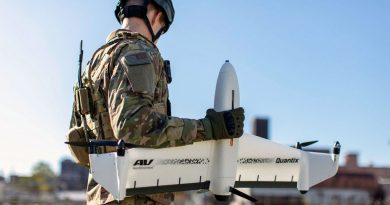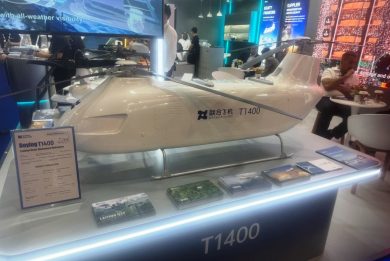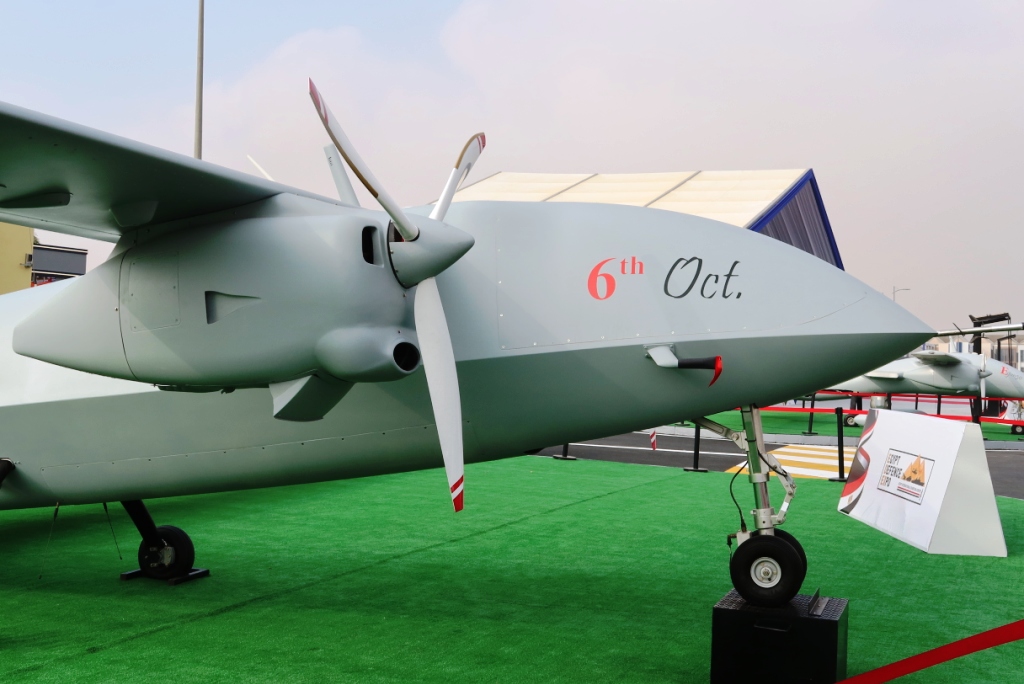
EDEX 2023 – New 6th October and Ahmous MALE UAVs from Egypt
At EDEX 2023 new MALE UAVs, the twin-engine 6th October and the single-engine Ahmous, were exhibited in the outdoor area, together with their Ground Control Station. These Egyptian unmanned systems might well reduce the country dependence from foreign systems, most UAVs in service being currently acquired from China and Turkey
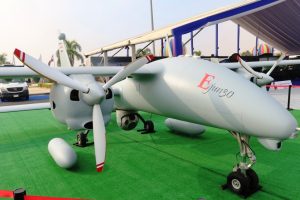
At EDEX 2021 it was possible to see for the first time the Egyptian-made EJune-30, a Medium Altitude Long Endurance (MALE) unmanned air vehicle (UAV), which was named after the 30 June 2013 revolution. Its aerodynamic configuration was heavily based on that of the Emirati Adcom System Yabhon Flash-20, which in turn originated from the Belar YS-Ex drone, from Belarus. The peculiar aerodynamic configuration sees a high main wing carrying two engine nacelles, each engine powering a three-blade propeller. What makes the UAV peculiar is the horizontal tailplane, which has a span comparable to that of the main wing and which is in fact a wing in itself, with a smaller cord compared to the main one, and is fitted with winglets. A single vertical rudder is located at the rear of the fuselage.
The EJune-30 SW, which was exhibited also at the 2023 edition, is 8.9 metres long, 2.6 metres high, has a 12 metres wingspan, a maximum take-off weight of 1,400 kg and a 270 kg payload. Depending on configuration it can fly for 14-16 hours, at altitudes up to 23,000 ft, at a maximum speed of 260 km/h, cruise speed being between 120 and 240 km/h depending on the mission.
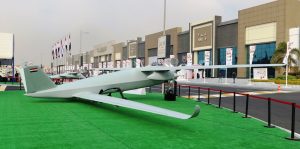
Beside it an upgraded version known as 6th October, which remembers the 1973 war, was on show. Not many data were provided about this new multirole UAV. Its endurance is doubled, up to 30 hours, wingspan being increased to 18 metres. No weight figures were provided, however the new MALE has 13 hard points, six per wing plus a central one, wet pylons allowing the use of auxiliary fuel tanks. According to information obtained by EDR On-Line the horizontal tailplane has a different wing profile and has obviously a greater span, maintaining the winglets as its predecessor.
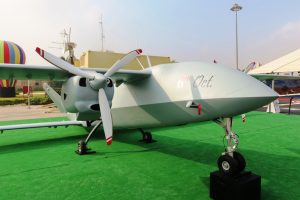
While retaining a common configuration with the EJune-30 the 6th October clearly differs for its fuselage; while the section of that of the previous model was much thinner in the rear part, that of the bigger MALE UAV does not change much, EDR On-Line understanding that most of the extra volume is used to host a bigger fuel tank. More powerful engines, no details being unveiled, have been installed, which increases fuel consumption, hence the need for the much bigger fuselage. Another major difference is the V-shaped rear tailplane, which allows defining what in the EJune-30 SW could be considered a huge tailplane as a real second wing. The new development features a retracting front tricycle landing gear similar to that of the smaller UAV. At EDEX 2023 the 6th October could be seen without payloads. Among the few figures provided, range was established at 240 km, with line-of-sight data link, a SATCOM link allowing a much greater range considering the endurance and the 260 km/h maximum speed, cruise speed being also of 120-240 km/h while landing speed is 120 km/h, service ceiling been 18,000 ft. EDR On-Line understood that the new MALE UAV developed by Egypt has just finished the ground testing phase and is being prepared for its maiden flight, which is scheduled for 2024.
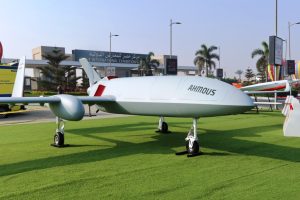
A single-engine MALE UAV was also exhibited at EDEX 2023. Named Ahmous it has a more conventional architecture, with the single 145 hp piston engine located at the rear of the fuselage, driving a three-blade pushing propeller. Two nacelles on the wing host the main landing retractable gears, two booms protruding from those nacelles to the back, where they are linked by the horizontal tailplane, two vertical rudders slightly inclined inwards representing the vertical tailplane.
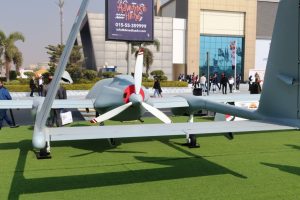
A much lighter airframe compared to the 6th October, with a lesser payload and only seven hard points, three per wings plus one under the fuselage, the Ahmous nonetheless has the same 30 hours endurance of the 6th October according to company sources. Its single wing has a span of 17.23 metres while maximum speed is 250 km/h, with a 120-240 km/h cruise speed, depending on the mission, and a 120 km/h landing speed, while service ceiling is 22,000 ft. With the line-of-sight data link it has a range in excess of 100 km, which can obviously be increased by installing a SATCOM link.
Both the 6th October and the Ahmous can carry electro-optic payloads as well as SAR radars, no information on possible weaponisation of the two airframes being provided.
Two newly developed target drones were also on exhibition, the Taba 1 and Taba 2.
Photos by P. Valpolini

